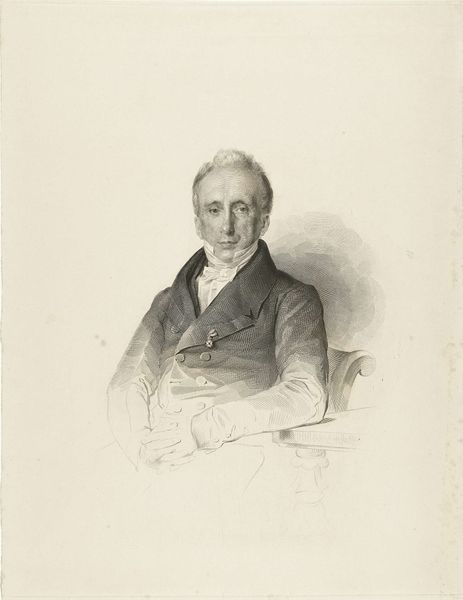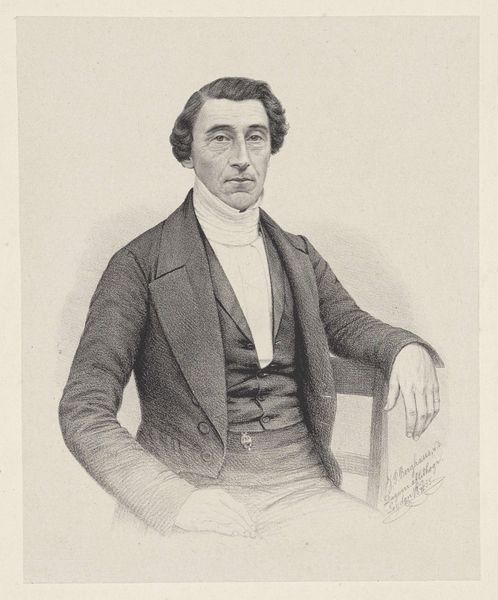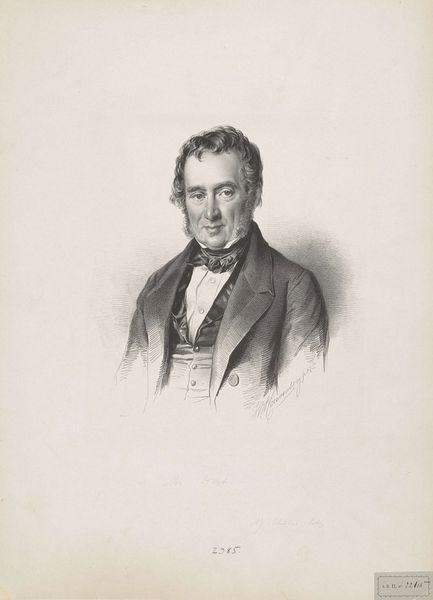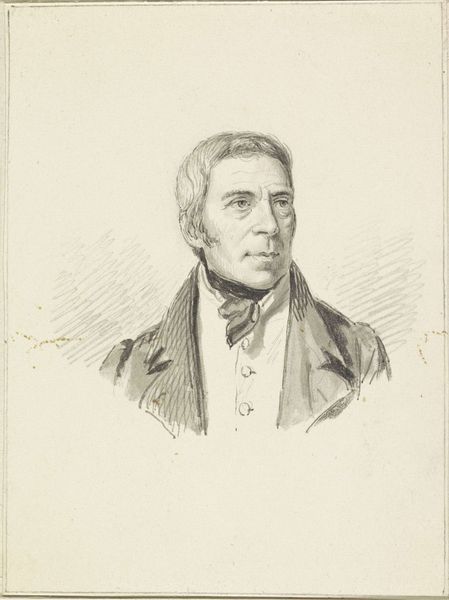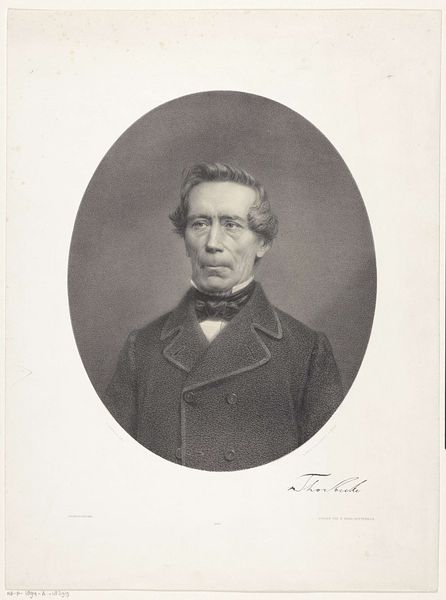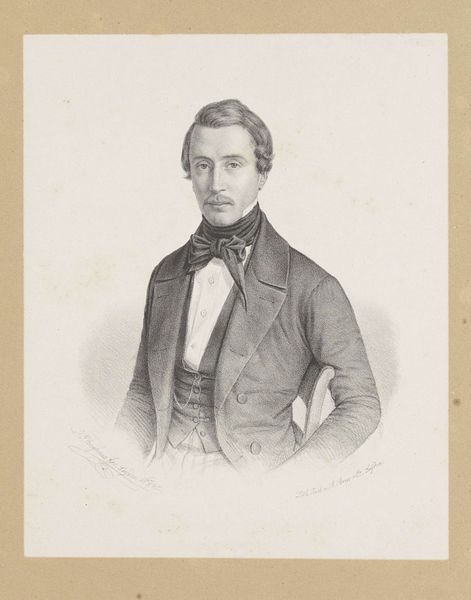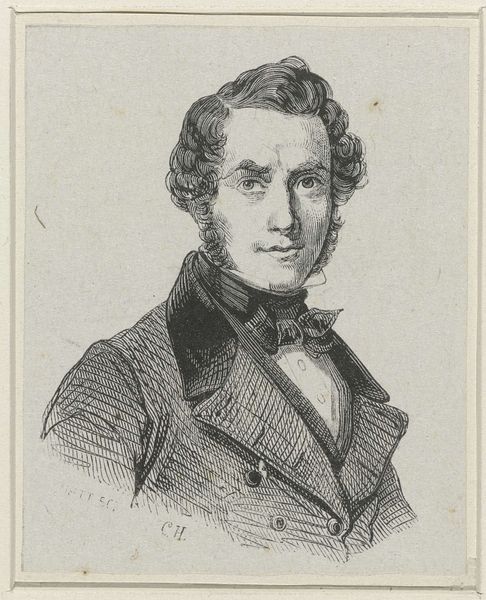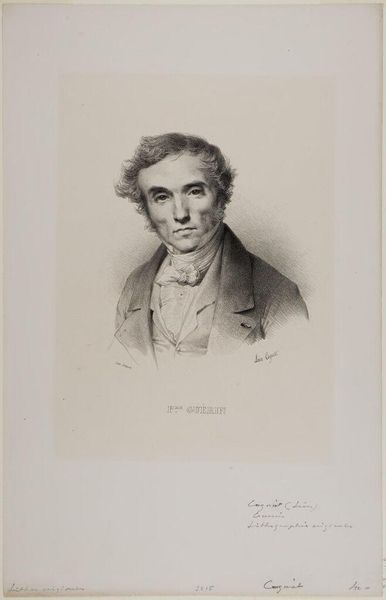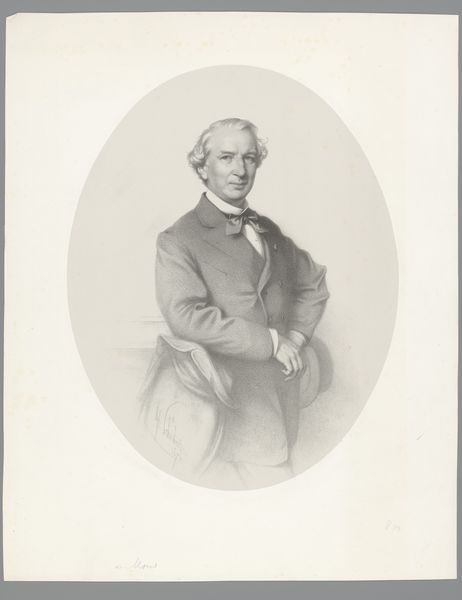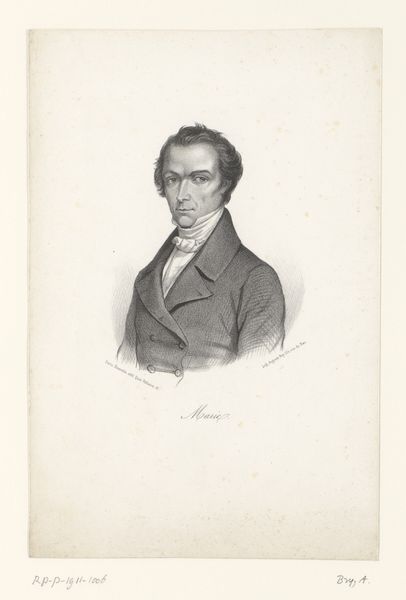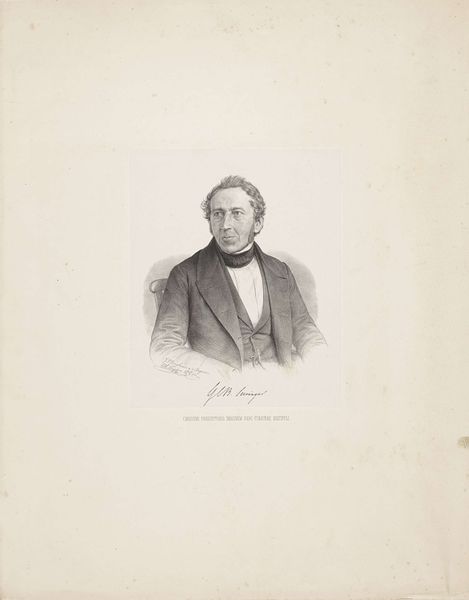
#
pencil drawn
#
light pencil work
#
photo restoration
#
pencil sketch
#
charcoal drawing
#
portrait reference
#
pencil drawing
#
portrait drawing
#
pencil work
#
watercolour illustration
Dimensions: height 362 mm, width 275 mm
Copyright: Rijks Museum: Open Domain
Curator: Welcome! We’re standing before Adrianus Johannes Ehnle's “Portrait of Andreas Schelfhout,” created in 1854. It resides here at the Rijksmuseum. Editor: There’s a stillness in this piece that's immediately striking. The muted tones evoke a sense of quiet contemplation. I can’t help but notice his piercing eyes, either. They suggest both intelligence and vulnerability. Curator: Absolutely. As a portrait, it functions almost like a social document, capturing a man who was a renowned landscape painter himself during the Dutch Romantic period. Consider the significance of portraiture in cementing cultural memory. Ehnle's rendering serves to monumentalize Schelfhout within the artistic landscape. Editor: Right, and thinking about that cultural context, portraiture like this was inherently tied to power dynamics. Who gets to be remembered, and how? Here we have Schelfhout, undoubtedly a figure of privilege, rendered in a medium often associated with precision and observation. Was this perhaps commissioned, cementing his social standing? Curator: More than likely. His gaze almost confronts the viewer directly, doesn't it? There's an awareness of being seen, and the attire—the neatly buttoned jacket, the carefully arranged cravat—speaks volumes about social presentation in the mid-19th century. Editor: Precisely. Even his clothing is symbolic of bourgeois identity during that era. The detailing in the jacket contrasts sharply with the slightly looser strokes in the face, drawing the eye towards the most crucial element, namely his character, the ‘aura’ of Andreas Schelfhout. It’s carefully constructed but perhaps a tad melancholic when observed more closely. Curator: And the subtlety in the medium itself. It appears to be a pencil or charcoal drawing, lending an intimate, almost sketch-like quality to the final product. It adds to that vulnerable element you mentioned earlier. Editor: This intimate depiction makes me consider the historical narrative—how art both reflects and shapes perspectives of people like Andreas Schelfhout, who, as you noted, enjoyed certain societal advantages. Does his preserved image overshadow, or perhaps influence, other lesser-known yet equally influential artists of his time? Curator: It’s a potent question. Perhaps contemplating that friction is how this work continues to be valuable as a lens for considering the complexities of the past. Editor: Indeed. Seeing it in that context reveals how art is never truly detached from the social fabric in which it was conceived. It invites continued investigation, one in which cultural assumptions need also be questioned.
Comments
No comments
Be the first to comment and join the conversation on the ultimate creative platform.
